Afghanistan 1998, 2001-21
Operation Infinite Reach: August 20, 1998
On August 7, Al-Qaeda almost simultaneously dropped bombs on U.S. embassies in Nairobi, Kenya, and Dar es Salaam, Tanzania, in Africa. In retaliation for these bombings the U.S. launched cruise missile strikes on Aftan and Sudan. The missiles targeted al-Qaeda training camps and the al-Shifa pharmaceutical factory in Sudan.

Operation Enduring Freedom: October 7, 2001
The US invaded Afghanistan following the September 11th attacks, aiming to dismantle al-Qaeda and remove the Taliban regime, which had harboured the terrorist group. Later 2015 started with Operation Freedom's Sentinel, which ran until the end of the conflict in 2021. In 2021, Taliban eventually regained control.
Bosnia 1994
Operation Deny Flight: April 12, 1993 – December 20, 1995
NATO, with US participation, conducted its first combat air strikes in Bosnia, targeting Bosnian Serb positions near the safe area of Goražde. The US role was to enforce the no-fly zone and carry out air strikes and close air support missions. This action was a response to Bosnian Serb attacks on the town and surrounding villages, and it marked the first time NATO had used aircraft to attack ground targets.

Cambodia 1970
The Cambodian Campaign: March 18, 1969 — May 26, 1970
The United States conducted a series of bombing campaigns in Cambodia, initially under the covert Operation Menu, a covert bombing campaign targeting North Vietnamese and Viet Cong base areas and supply routes in eastern Cambodia. And later under Operation Freedom Deal, as part of the broader Vietnam War effort.

China 1950-53
Battle of the Chosin Reservoir: June 25, 1950 — July 27, 1953
Amidst the Korean war, several times US and China were in confiltrations. These conflicts were due to US military bombing campaigns in North Korea, which shared a border with China.
The bombing raids, particularly those targeting infrastructure like power plants, also impacted northeastern China due to their proximity to the border. Chinese forces intervened in the war in November 1950, after US forces advanced towards the Yalu River, which marks the border between North Korea and China.
The Congo 1964
Operation Dragon Rouge: On November 24, 1964
The US was involved in supporting the Congolese government against rebellions. The US provided assistance to the Congolese government, including the use of aircraft for reconnaissance and support missions. This was to rescue the hostages held by Simba rebels during the Congo Crisis. The UN also played a role, with its peacekeeping force (ONUC) using air power to enforce mandates and counter rebel forces.

Cuba 1961
Bay of Pigs Invasion: April 17-20, 1961
A covert operation where Cuban exiles, trained and armed by the CIA, attempted to overthrow Fidel Castro's government in Cuba. While there were pre-invasion air strikes on Cuban airfields, the main event was the landing of the exile force at the Bay of Pigs on April 17th. The invasion was a major failure, with the exile force quickly overwhelmed by Castro's troops. Subsequently a related secret program of espionage and sabotage called Operation Mongoose was authorized in November 1961 and continued until the end of 1962.
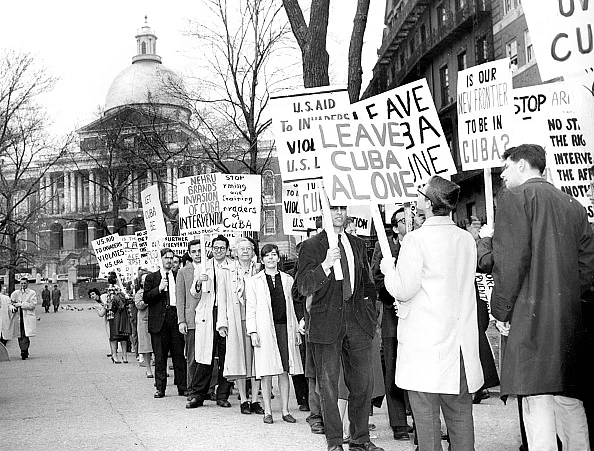
Dominican Republic 1965
Operation Power Pack: April 28, 1965 — September, 1966
The US forces became involved in the conflict between the Dominican military and rebels who sought to restore the exiled former democratically elected president, Juan Bosch. The US deployed over 22,000 troops, citing the need to protect American lives and property amidst a civil war. This intervention also involved the use of bombing missions and the blockade of the island.

El Salvador 1981-92
Operation Rescue: December 6-16, 1981
During the Salvadoran Civil War (1981-1992), the United States provided extensive military aid, including aircraft, to the Salvadoran government, which was engaged in a conflict with leftist guerrillas. While the U.S. did not directly conduct bombing campaigns, their military support enabled the Salvadoran Air Force to carry out attacks.

Grenada 1983
Operation Urgent Fury: October 25, 1983
The United States invaded Grenada, a small island nation in the Caribbean. This intervention followed a coup where the Deputy Prime Minister, Bernard Coard, overthrew and executed the previous leader, Maurice Bishop, who ousted the socialist Prime Minister Maurice Bishop. These developments led to concerns about the safety of American citizens leading to the operation.

Guatemala 1954,1960, 1967-69
Operation PBSuccess: June 18–27, 1954
A covert CIA operation was organised that resulted in the overthrow of the democratically elected Guatemalan President Jacobo Árbenz. The US involvement in Guatemala included a US-backed coup in 1954, which involved air bombing and psychological warfare.
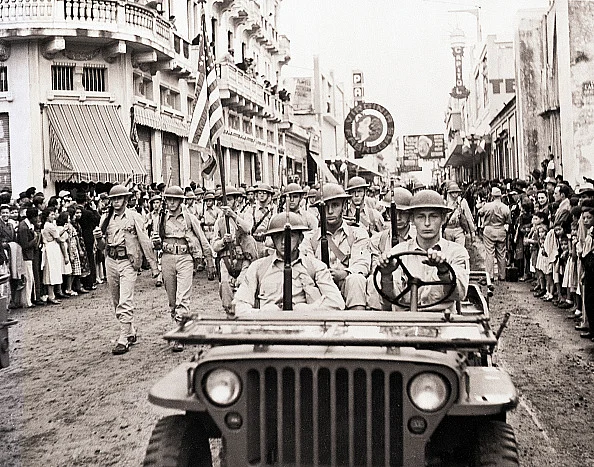
In 1960, a failed attempt of revolt against General Ydígoras Fuentes took place as he decided to allow the US to train an invasion force for the Bay of Pigs Invasion of Cuba in Guatemala without consulting the Guatemalan military.
Between 1967 to 1969, the US government significantly increased its involvement in the Guatemalan Civil War by providing military and counterinsurgency assistance to the Guatemalan government and its armed forces.
Indonesia 1958
Operation Haik: April and May 1958
The US was involved in covert operations in Indonesia, supporting anti-communist rebels during a period of regional rebellion. This support included providing arms and supplies, and also involved American pilots, notably Allen Lawrence Pope, who were captured while flying bombing missions for the CIA. The Indonesian government accused Pope of bombing civilian targets, further complicating the situation and revealing US involvement.
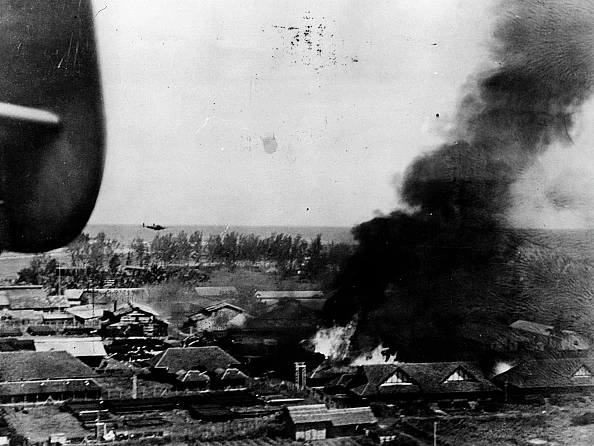
Iran 1987, 2025
Operation Nimble Archer: October 19, 1987
US destroyers shelled and destroyed two oil platforms used by the Iranian Revolutionary Guard Corps. This was in response to an Iranian missile strike on a Kuwaiti oil tanker during Operation Earnest Will, the US mission to protect Kuwaiti shipping. . The International Court of Justice later ruled the US actions were not justified as necessary to protect essential security interests.

Operation Midnight Hammer: On June 22, 2025
The US offensively involved itself in the Iran-Israel conflict and used B-2 bombers to drop "bunker buster" bombs on three key Iranian nuclear sites Fordow and Natanz, and Tomahawk missiles on Natanz and Isfahan. The operation aimed to destroy Iran's nuclear facilities and prevent the development of nuclear weapons.
Iraq 1991, 2003-11
Operation Desert Storm: January 17, 1991 - February 28, 1991
Following Iraq's invasion of Kuwait in August 1990, the United States led a 42-country coalition to liberate Kuwait and counter Saddam Hussein's regime. The military phase, Operation Desert Storm, began with a massive aerial bombing campaign. This air campaign, lasting five weeks, extensively targeted Iraqi military and civilian infrastructure in both Iraq and Iraqi-occupied Kuwait. The coalition aimed to destroy Iraqi air defenses, communication networks, weapons plants, oil refineries, and transportation routes. The intense bombing crippled Iraq's military capabilities, paving the way for a swift ground offensive that liberated Kuwait.

Operation Iraqi Freedom: March 20, 2003 - August 31, 2010
The US-led invasion of Iraq, dubbed Operation Iraqi Freedom, began on March 20, 2003, with an intense "shock and awe" bombing campaign against Baghdad and other strategic targets. The initial aerial assault aimed to rapidly dismantle Saddam Hussein's regime and military. After the initial invasion and the fall of Baghdad, bombing continued as part of counter-insurgency operations, targeting insurgent groups and their infrastructure throughout the ensuing occupation and civil war.
Korea 1950-53
Korean War: June 25, 1950 – July 27, 1953
The Korean War later led to the formation of North Korea and South Korea. During the War the US, as part of the United Nations Command, conducted extensive bombing campaigns against North Korea. These campaigns targeted military and industrial infrastructure, including hydroelectric dams, airfields, bridges, and cities, resulting in significant destruction. The bombing campaign was a key part of the US strategy to weaken North Korea's ability to wage war and to influence the political outcome.

Kuwait 1991
Operation Desert Storm: January 17, 1991 - February 28, 1991
The US conducted a bombing campaign in Kuwait during the Gulf War, which specifically targeted Iraqi forces and infrastructure following Iraq's invasion of Kuwait. This aerial campaign, known as Operation Desert Storm, began in January 1991 and aimed to liberate Kuwait and weaken Saddam Hussein's regime

The bombing campaign, which lasted for several weeks, was designed to cripple Iraq's military capabilities and infrastructure. The coalition forces, spearheaded by the US, aimed to destroy Iraqi air defences, communication networks, weapons plants, oil refineries, and transportation routes.
Laos 1964-73
The Secret War: 1964-1973
The United States conducted a large-scale bombing campaign in Laos from 1964 to 1973, dropping more than two million tons of bombs, exceeding the amount dropped on Germany and Japan during World War II. This "Secret War" was part of a broader effort to disrupt North Vietnamese supply lines, particularly along the Ho Chi Minh Trail, and support the Royal Lao government against communist insurgents. The bombing campaign resulted in significant casualties and long-term dangers due to unexploded ordnance.
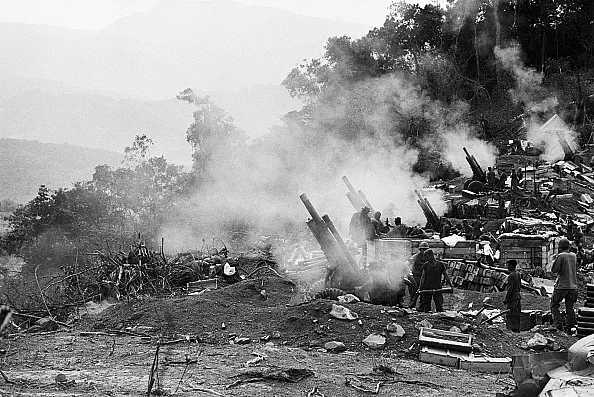
Lebanon 1982
Multinational Peacekeeping Force (US involvement): 1982-1984
In 1983, the United States was involved in Lebanon as part of a multinational peacekeeping force aiming to stabilise the country following the Israeli invasion. This involvement became tragically marked by two significant bombings: the U.S. Embassy bombing in April and the Marine barracks bombing in October. The latter, a suicide truck bombing, resulted in the deaths of 241 U.S. servicemen and remains the deadliest single-day attack on the U.S. Marine Corps since World War II's Iwo Jima battles
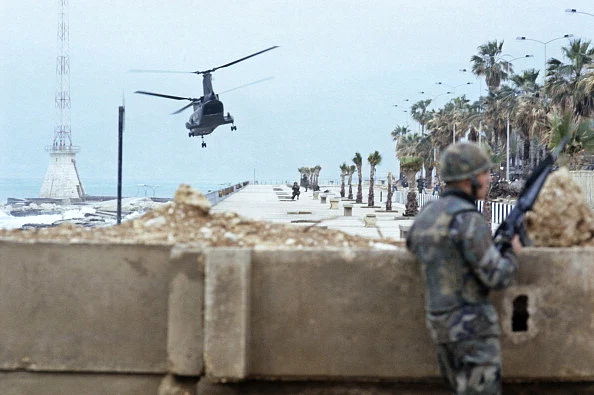
Libya 1986, 2011
Operation El Dorado Canyon: April 15, 1986.
The US engaged in bombing campaigns in Libya in both 1986 and 2011.
In 1986, the US launched Operation El Dorado Canyon, a series of air strikes targeting military and terrorist facilities in response to the April 5, 1986 by bombing of a West Berlin discotheque frequented by US military personnel, which resulted in the deaths of two American soldiers and injuries to many others.

Operation Odyssey Dawn: March 19, 2011 - March 31, 2011
In 2011, the US participated in Operation Odyssey Dawn, a NATO-led intervention during the Libyan Civil War, enforcing a no-fly zone and carrying out air strikes against Muammar Gaddafi's forces. The intervention contributed to the fall of Gaddafi's regime, but also led to a prolonged period of instability in Libya.
Nicaragua 1980-90
Covert Operations / Contra Support: 1981-1990
From 1981 to 1990, the United States was heavily involved in Nicaragua through covert operations, financial and military aid to the Contras, a rebel group fighting against the Sandinista government. This support included training, weapons, and intelligence, despite the Boland Amendment, which aimed to restrict US involvement. The CIA was involved in mining Nicaragua's harbours, a move that drew international criticism and led to a case against the US at the International Court of Justice.
Pakistan 2003, 2006
Drone Strikes in Northwest Pakistan: 2004-2018
Between 2004 and 2018, the United States government attacked thousands of targets in northwest Pakistan using drones operated by the United States Air Force under the operational control of the Central Intelligence Agency's Special Activities Division.
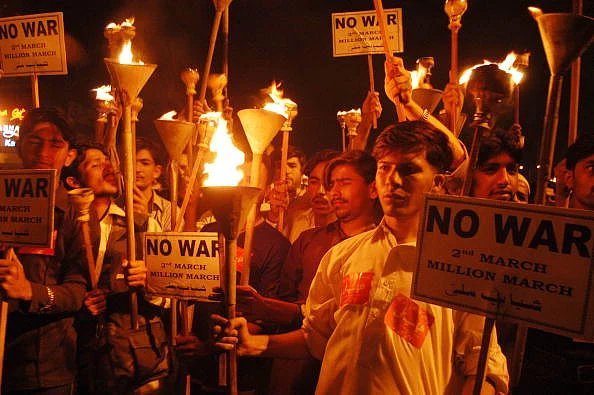
Most of these attacks were on targets in the Federally Administered Tribal Areas (now part of the Khyber Pakhtunkhwa province) along the Afghan border in northwest Pakistan. These strikes began during the administration of United States President George W. Bush and increased substantially under his successor Barack Obama. Some in the media referred to the attacks as a "drone war".
Palestine 2010
Peace Negotiations 2010
US involvement in the Israeli-Palestinian conflict was primarily diplomatic, financial, and military support to Israel, alongside humanitarian and development aid to Palestinians. In 2010, the focus of US engagement in the region was largely on facilitating peace negotiations between Israel and the Palestinian Authority.
While the US did not bomb, there were significant Israeli military operations, including airstrikes in the Gaza Strip in response to Palestinian militant activities, and the controversial Mavi Marmara flotilla incident, which drew international attention to the blockade of Gaza.
Panama 1989
Operation Just Cause: December 20, 1989 - January 31, 1990
The United States invaded Panama under the operation codenamed "Just Cause" in December 1989. The invasion, authorised by President George H.W. Bush, aimed to remove Panamanian dictator Manuel Noriega, who was wanted in the US for drug trafficking and racketeering.
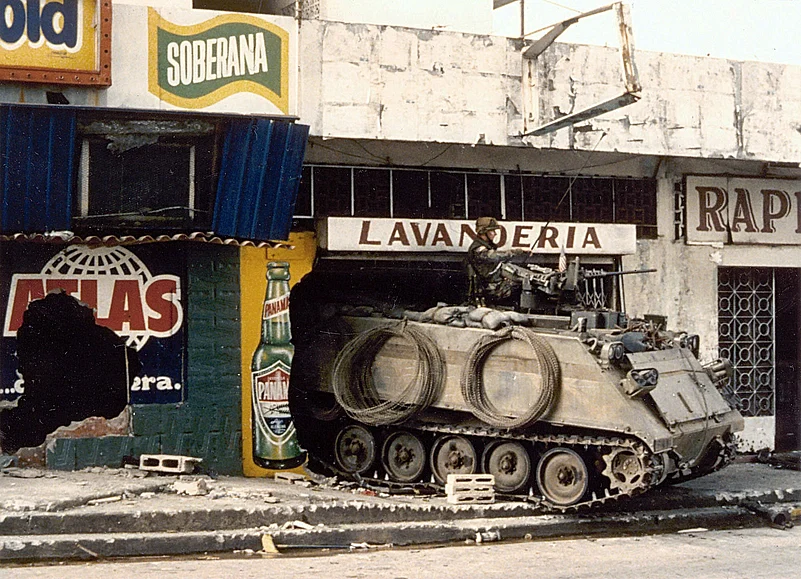
The invasion involved the deployment of approximately 27,000 US troops and resulted in the capture of Noriega, who was then extradited to the US for trial. The invasion was prompted by a series of escalating tensions between the US and Panama, including the annulment of the 1989 Panamanian presidential election and the killing of a US Marine
Peru 1965
Counter-insurgency Efforts (US Support), 1965
In 1965, there was a guerrilla uprising in Peru involving the ELN (Ejército de Liberación Nacional) and MIR(Movimiento de Izquierda Revolucionaria), groups inspired by the Cuban Revolution. While the U.S. was not directly involved in bombing Peru during this specific period, they were involved in the region through counterinsurgency efforts.
The Peruvian government, with U.S. support, responded to the guerrillas with military force, including air strikes. The uprising and the government's response occurred within the context of the Cold War, with the U.S. concerned about the spread of communism in Latin America.
Serbia 1999
Operation Allied Force 1999, March 24, 1999 - June 10, 1999
In 1999, NATO, led by the United States, conducted a bombing campaign against Yugoslavia, primarily targeting Serbian military positions in Kosovo, starting on March 24. This campaign, known as Operation Allied Force, aimed to halt the Yugoslav government's crackdown on ethnic Albanians in Kosovo.
The bombing campaign lasted for 78 days, ending on June 10, with Yugoslavia agreeing to withdraw its forces from Kosovo. The bombing campaign involved extensive use of air power, with various aircraft including F-117 stealth fighters, B-52 bombers, and F-15 fighter jets participating. The attacks targeted military infrastructure, communication networks, and other strategic locations
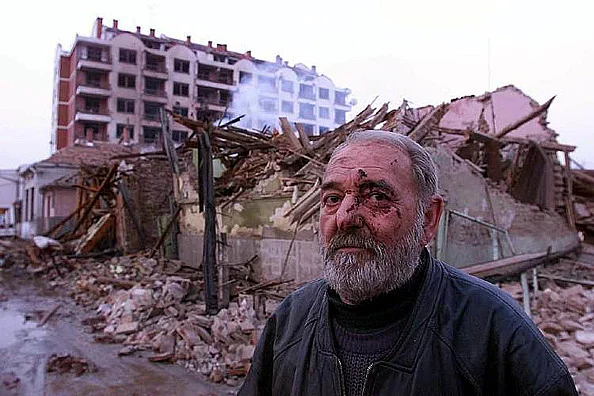
Somalia 1993, 2007, 2010
Operation Restore Hope (UNITAF): December 9, 1992 - May 4, 1993 and
Operation Gothic Serpent: August - October 1993
The US was deeply involved in Somalia in 1993. Initially, Operation Restore Hope was a UN-mandated humanitarian mission to address famine amid civil war, starting in December 1992, to secure aid delivery.
As the situation evolved, Operation Gothic Serpent was launched in August 1993 by US Special Operations forces. Their goal was to capture warlord Mohamed Farrah Aidid. This culminated in the intense Battle of Mogadishu on October 3-4, 1993, where 18 American soldiers died. This led to a re-evaluation of US engagement and withdrawal of most forces by early 1995.
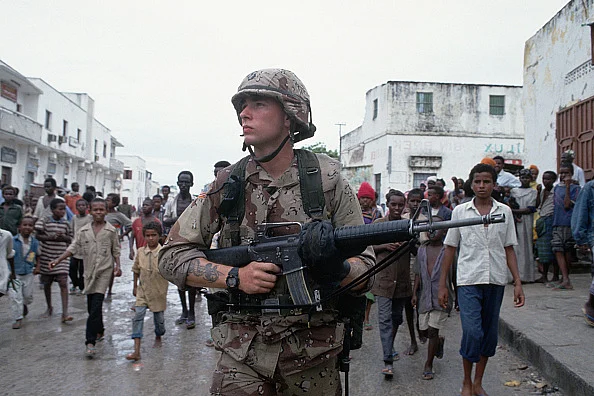
American Military Intervention in Somalia (part of a broader counter-terrorism effort): January 7, 2007 - ongoing
In 2007, the US military became involved in Somalia as part of broader counter-terrorism efforts, primarily targeting Islamist groups like al-Qaeda and al-Shabaab. This involved airstrikes, including drones and naval missiles, special forces operations, and advisory missions.
US forces supported the Ethiopian military intervention in 2006-2007 against the Islamic Courts Union (ICU). Airstrikes in 2007 aimed to disrupt ICU leadership and prevent Somalia from becoming a terrorist safe haven.
Military Intervention 2010
American in Somalia (continuation of counter-terrorism efforts): Ongoing from 2007
In 2010, US military operations in Somalia continued as part of the ongoing counter-terrorism campaign against al-Shabaab and other extremist groups.
These operations primarily involved drone and fighter aircraft strikes, conducted at the request of the Somali government. The aim was to target al-Shabaab militants and disrupt their insurgency and attacks. The overall US military intervention in Somalia, which began in 2007, remained active during this period.
Sudan 1998
Operation Infinite Reach: August 20, 1998
In August 1998, the United States launched missile strikes against a pharmaceutical factory in Khartoum, Sudan, and a training camp in Afghanistan. These attacks, codenamed Operation Infinite Reach, were in response to the bombings of the U.S. embassies in Kenya and Tanzania. The U.S. claimed the Sudanese factory, al-Shifa, was producing chemical weapons and had ties to Osama bin Laden's al-Qaeda network, which was believed to be behind the embassy bombings. The Sudanese government denied the accusations.

Syria 2014
Operation Inherent Resolve: September 22, 2014 - Present
In 2014, the United States officially intervened in the Syrian Civil War, with the primary goal of combating the Islamic State (ISIL/ISIS) militant organisation. This intervention was code-named Operation Inherent Resolve, which began on September 22, 2014. The US-led coalition launched airstrikes against ISIS targets in Syria, using a mix of fighter, bomber, and remotely piloted aircraft, as well as Tomahawk missiles.

These strikes aimed to destroy ISIS fighters, training compounds, headquarters, and financial and logistical facilities. The US also began a program to train and equip moderate Syrian opposition groups. This marked a significant escalation of US involvement in the multi-sided Syrian conflict, shifting from a more cautious approach to direct military action against the rising threat of ISIS.
Vietnam 1961-73
Operation Pierce Arrow (August 5, 1964)
First overt US air strikes in Vietnam, retaliating for alleged attacks in the Gulf of Tonkin, escalating US involvement.
Operation Rolling Thunder (March 2, 1965 - November 2, 1968)
Sustained US bombing campaign against North Vietnam, attempting to cut supply lines and cripple military infrastructure, but largely failed.
Operation Barrel Roll (December 14, 1964 - March 29, 1973)
Covert US air interdiction in northern Laos, targeting the Ho Chi Minh Trail to disrupt enemy logistics.
Operation Steel Tiger (April 3, 1965 - November 11, 1968)
Covert US air interdiction in southern Laos, specifically aimed at cutting the Ho Chi Minh Trail.

Operation Arc Light (B-52 Bombing) (June 18, 1965 - August 15, 1973)
Strategic bombing by B-52s across Vietnam, Laos, and Cambodia, used for destructive power against enemy concentrations and supply lines.
Operation Junction City (February 22 - May 14, 1967)
Large US "search and destroy" mission in South Vietnam, aiming to eliminate Viet Cong headquarters and forces, with limited long-term success.
Tet Offensive Counteroffensive Campaigns (January 30, 1968 - onwards)
Intense fighting by US and South Vietnamese forces to regain ground after widespread North Vietnamese/Viet Cong attacks. Though a military defeat for the enemy, it significantly shifted US public opinion against the war.
Operation Menu (Secret Bombing of Cambodia) (March 18, 1969 - May 26, 1970)
Covert US B-52 bombings in Cambodia targeting NVA/Viet Cong sanctuaries, revealed to the public outcry.
Cambodian Incursion (April 29 - July 22, 1970)
Ground invasion of Cambodia by US and South Vietnamese forces to destroy enemy bases, effective but sparked widespread anti-war protests.
Operation Linebacker I (May 9, 1972 - October 23, 1972)
Major US bombing campaign against North Vietnam in response to the Easter Offensive, effectively disrupting the invasion.
Operation Linebacker II (December 18, 1972 - December 29, 1972)
Intense "Christmas Bombings" of North Vietnam by B-52s, aimed at forcing a peace settlement, which it successfully achieved.
Yemen 2002, 2009
Operation Enduring Freedom 2002 - Yemen (Counter-terrorism operations)
In 2002, the US began direct military operations in Yemen, cooperating with the Yemeni government. This involved drone strikes, other air strikes, and Special Forces operations. The purpose was to target Al-Qaeda leaders and engage in broader counterterrorism. The first known targeted US drone missile strike in Yemen occurred in November 2002, killing Al-Qaeda leader Qa'id Salim Sinan al-Harithi, who was involved in the USS Cole bombing in 2000. Yemen was designated a combat zone to support Operation Enduring Freedom (OEF).
Al-Majalah camp attack on December 17, 2009
. The US military launched Tomahawk cruise missiles from a ship off the Yemeni coast at a Bedouin camp in the southern village of Al-Majalah. While the US and Yemeni governments initially denied US involvement, evidence later pointed to US responsibility, and it was revealed that cluster bombs were used. Reports from human rights groups and a Yemeni parliamentary inquiry indicated that while some alleged Al-Qaeda fighters were killed, a significant number of civilians, including women and children, also perished in the strike. This attack, along with others around that time, was part of a renewed push to counter AQAP's growing threat.
Yugoslavia 1999
Operation Allied Force (NATO): March 24, 1999 - June 10, 1999
In 1999, NATO, led by the US, conducted an air campaign against Yugoslavia (Serbia and Montenegro) from March 24 to June 10. The goal was to stop the Serbian "ethnic cleansing" of Kosovar Albanians after diplomatic failures. The bombing targeted military and strategic infrastructure to pressure President Milošević to withdraw forces from Kosovo and accept peacekeepers. The campaign ended with the Kumanovo Agreement, leading to the withdrawal of Yugoslav forces and the deployment of KFOR. It achieved its objective but was controversial due to a lack of UN mandate and civilian casualties.
















